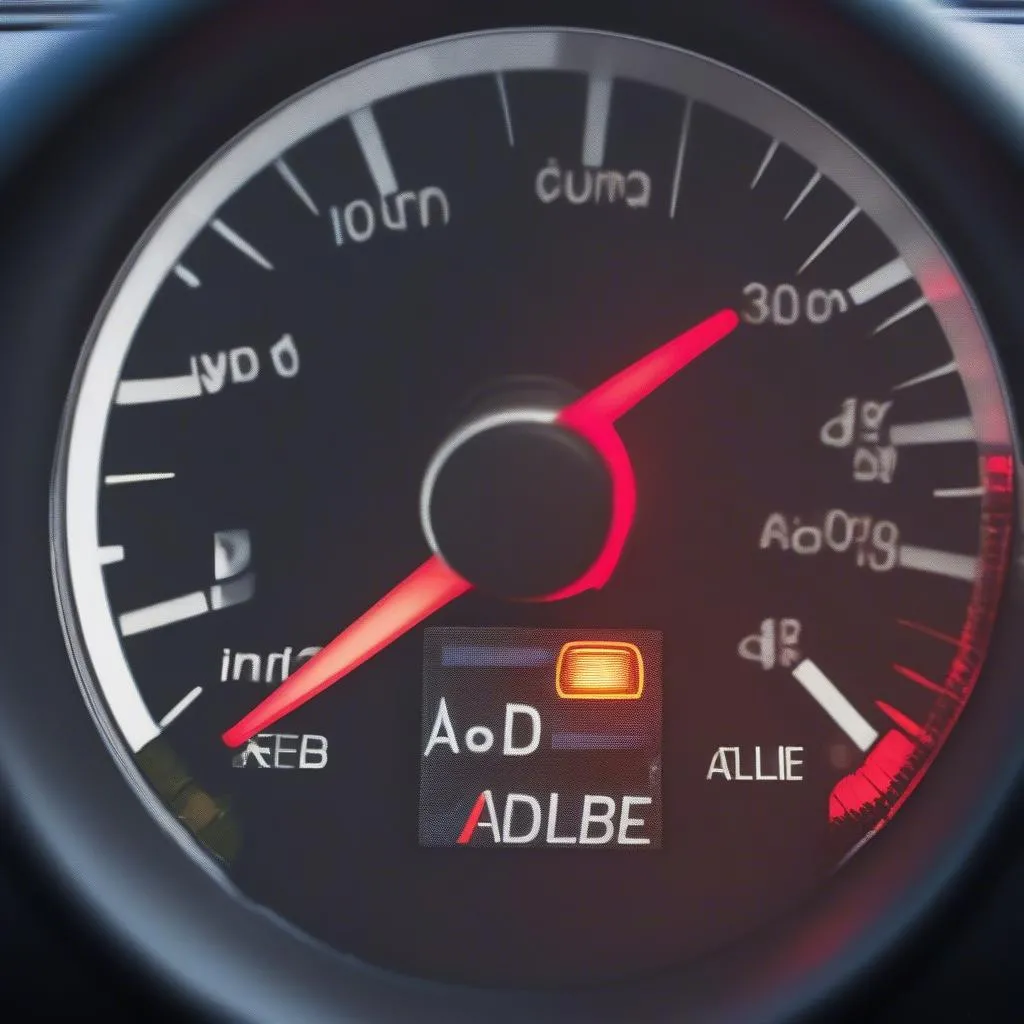The brake system warning light on your Toyota is a crucial safety indicator. Ignoring it can lead to serious consequences, compromising your ability to stop effectively. This guide will delve into the common causes of the brake system warning light illuminating on Toyota vehicles and offer practical troubleshooting steps, including remote diagnostic and software solutions.
Understanding the Brake System Warning Light
The brake warning light, often a red exclamation mark within a circle or parentheses, signals a potential issue within your braking system. This system is complex and includes various components, from the brake pedal and master cylinder to the brake lines, calipers, rotors, and drums, as well as the parking brake. A malfunction in any of these areas can trigger the warning light.
Common Causes of the Brake System Warning Light in Toyotas
Several factors can illuminate the brake warning light in your Toyota. Some common culprits include:
- Low Brake Fluid: This is perhaps the most frequent cause. A leak in the brake lines or worn brake pads can reduce the brake fluid level, triggering the warning light.
- Worn Brake Pads: Brake pads wear down with use, and when they reach a critical point, a sensor will activate the warning light.
- Faulty Brake Light Switch: This switch, located near the brake pedal, can malfunction and cause the brake warning light to come on, even if there’s no issue with the braking system itself.
- ABS Issues: Problems within the Anti-lock Braking System (ABS), such as a malfunctioning sensor or low ABS fluid, can trigger the light.
- Parking Brake Engaged: Sometimes, simply forgetting to disengage the parking brake can illuminate the warning light.
Troubleshooting the Brake Warning Light
Before rushing to a mechanic, you can perform some basic checks:
- Check the Parking Brake: Ensure the parking brake is fully released.
- Inspect Brake Fluid Level: Locate the brake fluid reservoir and check the fluid level. It should be between the minimum and maximum markings.
- Check Brake Pedal Feel: Does the pedal feel spongy or go too low? This could indicate air in the brake lines or a leak.
- Visually Inspect Brake Pads: If possible, check the thickness of your brake pads. Thin pads may need replacement.
Remote Diagnostics and Software Solutions
Modern Toyotas often utilize sophisticated electronic systems that can be diagnosed remotely. Specialized software and diagnostic tools allow technicians to identify specific fault codes related to the brake system, providing a more precise understanding of the issue. These tools also enable remote software updates and calibrations, which can sometimes resolve software-related brake system problems without physical intervention.
“Remote diagnostics are transforming how we approach car repairs. By analyzing data directly from the vehicle’s systems, we can often pinpoint the exact problem and even implement fixes remotely,” says John Miller, Senior Automotive Diagnostics Engineer at Advanced Auto Solutions.
When to Seek Professional Help
If your brake warning light persists after performing these checks, or if you notice any unusual braking behavior, seek professional help immediately. Driving with a compromised braking system is dangerous.
“Don’t underestimate the importance of a functioning brake system. If you’re experiencing any issues, it’s always best to err on the side of caution and have a qualified technician inspect your vehicle,” adds Maria Sanchez, Lead Mechanic at Precision Auto Care.
Conclusion
The brake system warning light in your Toyota shouldn’t be ignored. Understanding its potential causes and taking appropriate troubleshooting steps, including leveraging remote diagnostics and software solutions, can help you address the issue effectively and maintain the safety of your vehicle. If you are unsure about any aspect of brake system maintenance, consult a qualified technician immediately.
FAQ
- What does the brake warning light mean? It signifies a potential problem within your Toyota’s braking system.
- Can I drive with the brake warning light on? It’s highly discouraged. Driving with a faulty braking system is dangerous.
- How do I check my brake fluid level? Locate the brake fluid reservoir in the engine bay and check the fluid level against the minimum and maximum markings.
- What are some common causes of a brake warning light in Toyotas? Low brake fluid, worn brake pads, a faulty brake light switch, or issues with the ABS are common causes.
- What is remote diagnostics? It involves using specialized software to analyze data from your car’s systems and identify issues remotely.
- Can remote software updates fix brake problems? In some cases, software-related brake issues can be resolved through remote software updates.
- When should I see a mechanic about my brake warning light? If the light persists after basic troubleshooting, or if you experience any unusual braking behavior, consult a mechanic immediately.

